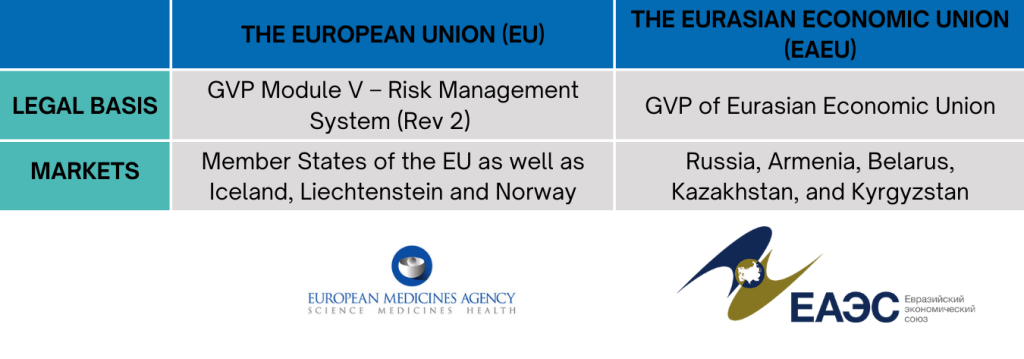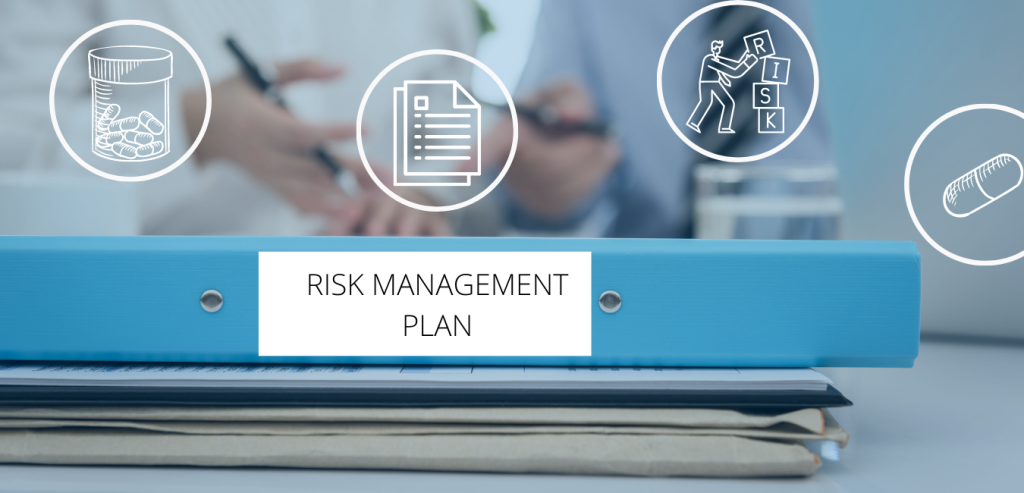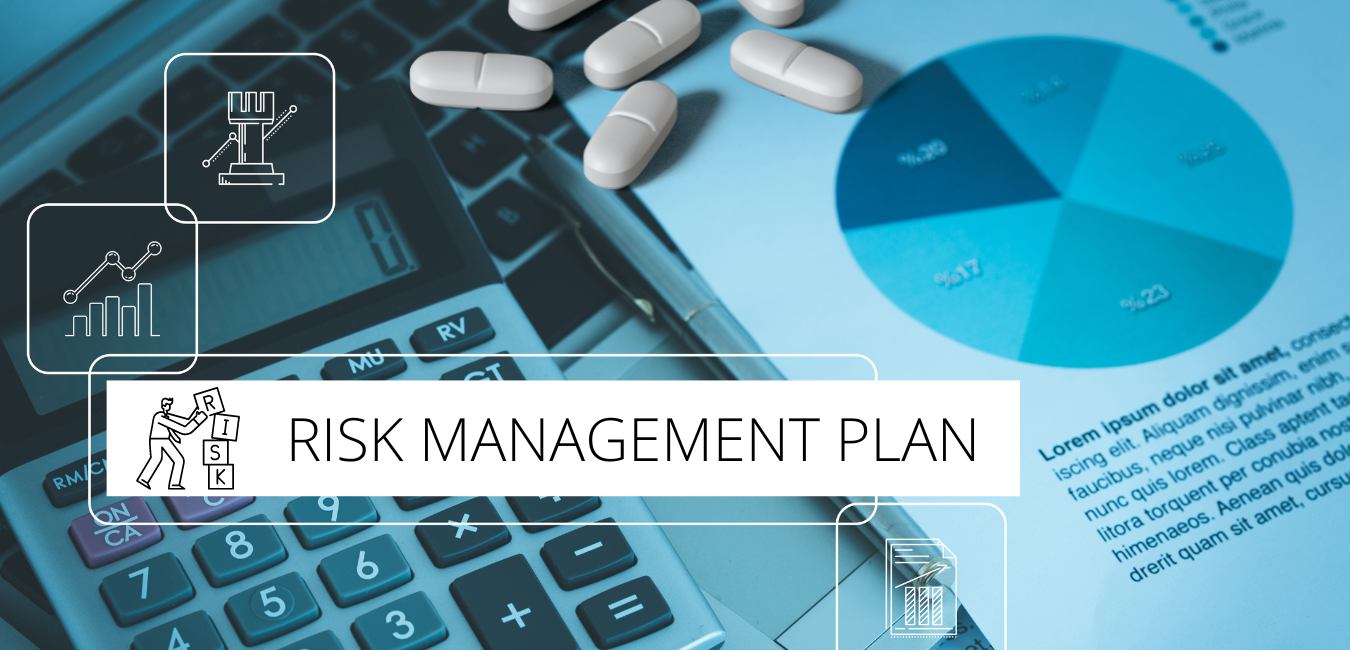One of the documents that is needed to be prepared when registering medicinal product is Risk Management Plan (RMP). It is an obligatory document for each newly registered medicinal product. Its aim is, on the one hand, to characterize the safety profile of a given drug and, on the other hand, to broaden the knowledge of potential risks for the patient and to plan measures to minimize these risks. For more information about RMP make sure to read our article.
How to start preparations of RMP?
The preparations of the RMP start with two key information: legal basis and market.

Link to GVP Module V – Risk Management System (Rev 2) is here, and link to GVP of Eurasian Economic Union is here.
Firstly, remember to check the market the RMP is intended for! Secondly, make sure under what type of application the medicinal product is intended to be registered. Then you should start with familiarization with appropriate guideline. Always make sure to work with the latest version of documents. In March 2022 updated version of GVP of EAEU was published which changed mainly RMP Part II Module CVII “Details of important identified risks, important potential risks, and missing information” with additional and broader description of risk minimization methods and impact on the risk-benefit balance of the product. Please be mindful about different markings for subsections in the Part II for RMP in EU it is “S” standing for sections and for EAEU it is “C” – chapters.
Please remember that there is no need of RMP when medicinal product is intended to be registered as a traditional herbal medicinal product or a homeopathic medicinal product and some parts could be omitted or have shortened content, for example, for generics or hybrids medical products.
RMP EU and EAEU – are there any differences?
Answering this question – there are! Main differences between RMP for EU and EAEU are:
- Templates – Template for EU’s RMP is a basic document for its preparation and is published by the European Medicinal Agency (EMA) – here we present link to the page where it is published. Unfortunately RMP template for EAEU is not published.
Don’t worry! SciencePharma has prepared the template based on experience in this field. For non-EU markets we have prepared nearly 40 reports and gradually this number has been increasing- with time!
- Definitions of the important identified risk and potential risk – GVP of EAEU describe such risks as those which have an impact on the risk-benefit balance or have implications for public health. EMA narrowed this definition for EU registration to risks that are in need of further evaluation as part of pharmacovigilance plan or of risk minimization activities, making lists shorter or even empty.
- Description of modules – dissimilarities can be found in parts:
- Part II Module V – Post authorization experience
- Part II Module VI – Additional requirements for the safety specification
- Part II Module VII – Identified and potential risks
- Part III Pharmacovigilance Plan – Action plans for safety concerns with additional pharmacovigilance requirements
- Part V Risk minimizations measures – Evaluation of the effectiveness of risk minimization activities.
- Part VI – Summary of the risk minimization plan
- Part VII – Annexes
So, remember to always pay attention to which country your application is directed, because the content could be different while prepared RMP for Polish market or Kazakhstan market.

No need to prepare every part!
Competent Authorities of both unions allow in some cases to omit specific parts of RMP or not to describe them fully. This possibility is given for: generic, hybrid, fixed combination, biosimilar and well-established use types of applications.
For example, for generic product type application it is possible to:
- Omit Modules I-VII (Part II) if the reference product has RMP but if there are any new or excluded information – justification for making changes should be presented in module VII. Additionally, if the active substance is published on the Co-ordination group for Mutual recognition and Decentralised procedures – human CMDh list the same rules are applied to them. However, if neither of these two conditions is met for our product, a full description of modules VII and VIII should be provided.
- Both unions accept Part IV to be left off when the reference product has not imposed post-authorization efficacy studies.
- On the other hand, for Part V, an omission is allowed, when no differences between medicinal product and reference product are possible to be presented and reference drug does not take additional measures to minimize risks – the statement of alignment of safety information in Product Information is sufficient.
What is more CMDh introduced in 2019 Harmonization of Risk Management Plan Project (HaRP) which aims to harmonize the list of risks for EU products. According to proposed algorithm in this document only those safety concerns are eligible for inclusion that either:
- have ongoing additional pharmacovigilance activity, or
- have ongoing additional risk minimisation measure, or
- have essential targeted questionnaires in place.
Other safety concerns are suggested to be removed if there is not strong scientific argument for them to stay on the list. It simplifies compilation of the list of safety concerns for RMP on EU markets.

Not so simple?
Too many terms needed to be known? If you have any hesitation or doubts with preparation of RMP, remember that Pharmacovigilance team of SciencePharma has great experience in preparation for both EU and EAEU markets. Get in touch with us and we will take care of the rest!


